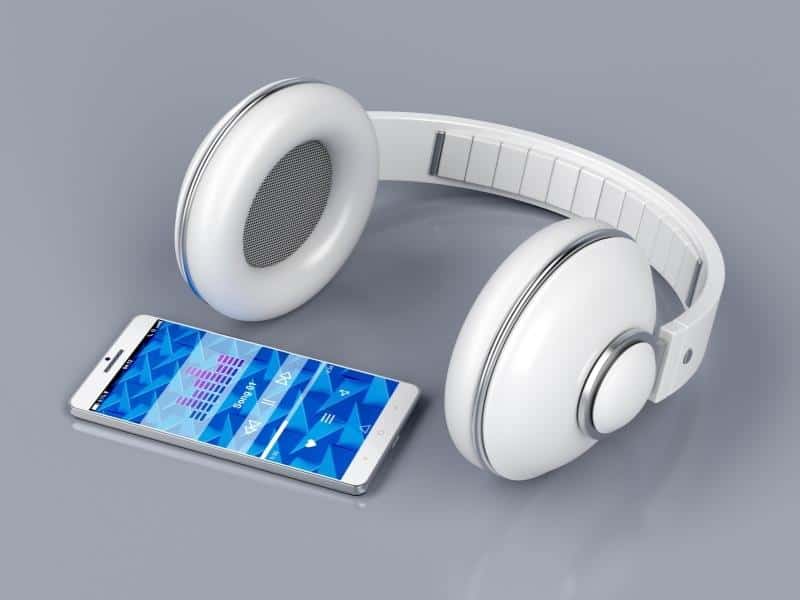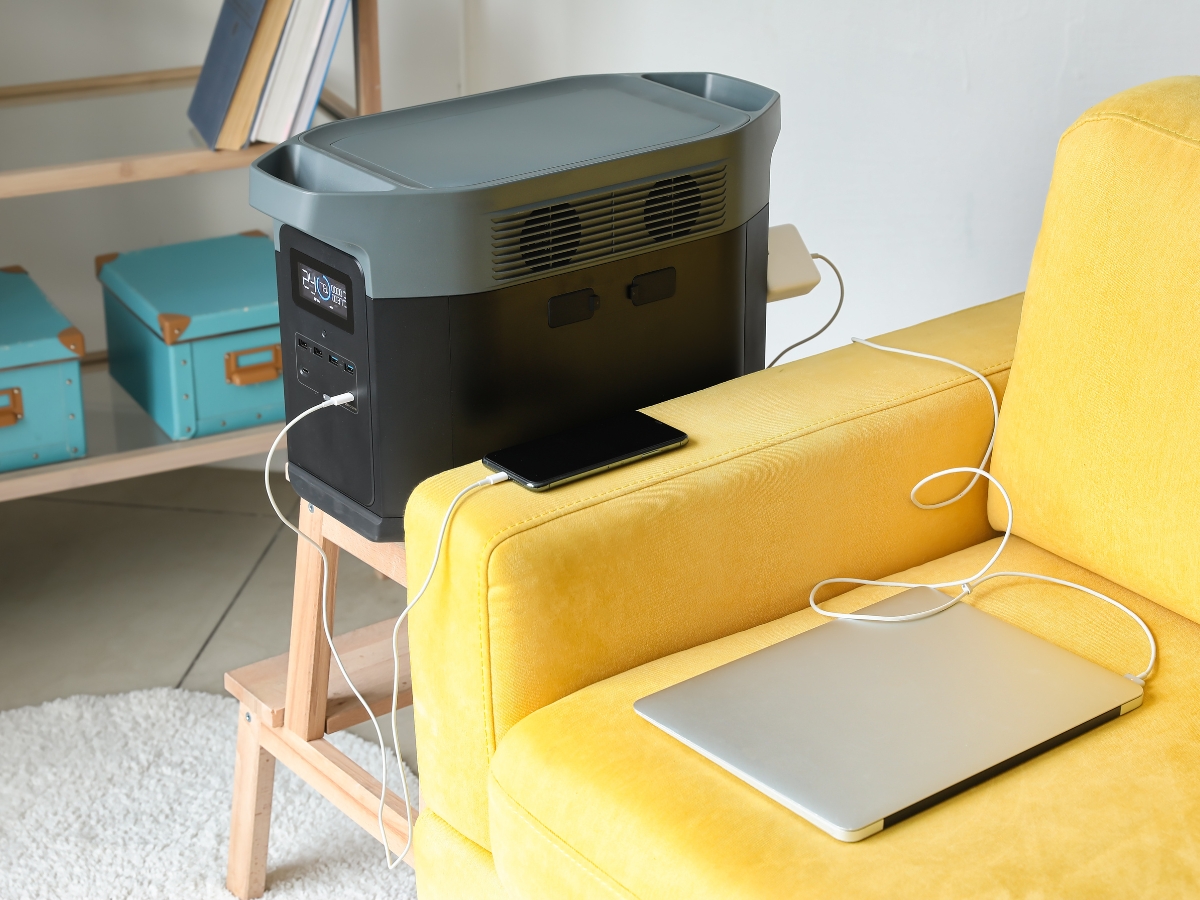Did you know that Bluetooth has been around since 2001, although it was invented in 1994? Since then, it has been a helpful creation to share documents, music, videos, and images to other Bluetooth-enabled devices. This wireless technology uses a radio frequency to send files over a short distance (approximately 30 feet depending on obstacles).
We generally assume that sharing data through Bluetooth drains our phone battery faster, but is that truly the case? And does Bluetooth have any effect on battery power if it is running on devices in the background?
- Bluetooth does not drain battery power as much as you would think.
- Sharing data using Bluetooth has little effect on the battery power.
- Turning on Bluetooth without using it drains 1.8% of the battery power.
- Constantly using Bluetooth drains 6.6% of battery power.
I used to share files over Bluetooth all the time. Although I do not use it as frequently anymore, I still do now and then. You might have had a good reason to believe the myth of Bluetooth draining power, especially when you always send data to friends, family, and co-workers, but that is clearly not the case.
Have a look through so you can know the pros and cons of Bluetooth, the danger of keeping it on when not using it, and why exactly it does not drain as much battery as you initially thought.

Does Bluetooth Drain Battery?
The truth is that Bluetooth only decreases your phone’s battery power when it is switched on and deliberately being used. Even then, battery usage is minimal because of Bluetooth Low Energy (BLE).
Technology is evolving, and we have found better and more practical methods of sharing data; however, Bluetooth seems to be timeless. Nowadays, Bluetooth does not only allow us to share media files, but it can connect to other devices such as AirPods, speakers, fitness trackers, and headphones.
If you own these devices and regularly use them via Bluetooth, then the amount of battery usage might be more.
But let us see how Bluetooth technology has advanced throughout these last 20 years. In the 90s, the first version of Bluetooth was released, known as standard Bluetooth. This earlier version drained more battery power, and its connection was not as reliable.
Nevertheless, it was a fantastic wireless technology creation, and, in those times, we felt as if they had developed something unworldly.
However, it only got better in 2010 when they released a new, upgraded version named Bluetooth 4.0. The more recent version offered brought us improved and reliable connection and low battery usage (Bluetooth Low Energy).
What Is The Difference Between BLE And Classic Bluetooth?
Both BLE and classic Bluetooth is loaded on Bluetooth-enabled devices (phones, laptops, tablets, etc.).
Bluetooth Low Energy (BLE) is mainly used for widgets such as a key finder. Classic Bluetooth is primarily used for devices that require a stable connection, like wireless earbuds or headphones to stream music.
Either way, how Bluetooth impacts your device’s battery depends on which gadget is connected to your device via Bluetooth.
Devices like fitness trackers or key finders use little battery power when connected to Bluetooth. They drain about 1 to 3 % of the battery because they are created to send minuscule amounts of information over Bluetooth in intervals to cut back on your device’s battery and the gadget’s battery.
Devices like wireless earbuds and speakers that stream and play music work differently. These devices need a stable connection; therefore, they drain much more battery power.
Thus, if you buy new gadgets and connect them via Bluetooth, keep track of the battery power on your device. If you are actively using it and your device’s battery is emptying quicker than usual, chances are it is the gadget you have connected that is draining the battery.
Remember, devices use different versions of Bluetooth, which means that battery drainage might increase.
The Uses Of Bluetooth
There are several devices that can connect to Bluetooth. Over the years, technology has improved, so it is much more practical to use devices. Here is a list of Bluetooth-enabled devices:
- Laptops
- Mobile phones
- Personal computer
- Wireless headset
- Wireless earphones
- Fitness trackers
- Heart rate monitors
- Smartwatches
- Bluetooth-enabled webcams
- Bluetooth-enabled printers
- GPS devices
- Tablets
- MP3 players
- Game Consoles
- Music systems
- Digital cameras
- Keyboard
- Mouse
These are not the only devices able to connect to Bluetooth. Gadgets like sensors, thermometers, and remotes can also connect to a phone, laptop, etc., using Bluetooth.
I suggest keeping an eye on the creation of the next few Bluetooth-ready devices. It is increasing significantly!
The Pros And Cons Of Using Bluetooth
We know there are many benefits to using Bluetooth; however, what are its disadvantages?
The Pros Of Using Bluetooth
Bluetooth was so popular it sent everyone into a frenzy, and here are a few reasons why:
- Bluetooth is a wireless technology, so there is no need for cables.
- Connections through devices are fast and straightforward.
- You can easily update Bluetooth.
- You can send pictures, documents, videos, audio, and other media through Bluetooth.
- Bluetooth is compatible with other devices.
- You do not need software installation to connect to Bluetooth because it is a plug-and-play device.
- Bluetooth can be used in Local Area Networks (LAN)
- Most of the time, it can be connected to other devices easily without additional hardware.
- Frequency-hopping spread spectrum technology (FHSS) is implemented in modern Bluetooth, which means data transfer is much more secure.
- It is cheaper to use Bluetooth than many other technologies.
- Bluetooth is readily available on laptops, personal computers, mobile devices, cars, and in some cases, music systems and headphones.
- It is very systematic in its performance.
- You can quickly transfer files between devices depending on the obstacles.
- The data range of Bluetooth surpasses the data range of infrared devices and communications.
You might still be able to think of some extra pros to using Bluetooth, but it is easy to see that this technology is worth more than we think.
The Cons Of Using Bluetooth
Much like other technological developments, Bluetooth has its restrictions. Let us look at a few:
- Only a small number of devices can be connected to Bluetooth.
- Bluetooth has a small data range (about 30 feet).
- It has lower bandwidth.
- Connectivity issues may arise if the two devices have different versions of Bluetooth.
- Hackers are another concern when using Bluetooth due to security issues.
- There are still security issues that can occur while data and files are transferring.
- Bluetooth is slower compared to wireless technology such as LAN with optic fiber and Wi-Fi.
- While sending data and files, there is a possibility that Bluetooth might lose its connection.
- If you need to send massive amounts of data, I recommend using other technology sources.
- Home Radio Frequency (RF) Technology can interfere and cause misconfiguration because it also works with its frequency.
Is It Safe To Leave Bluetooth On All The Time?
It’s not safe to leave your Bluetooth on. Like many other wired and wireless technologies, your Bluetooth can be hacked.
The Risk To Your Safety If You Constantly Leave Bluetooth On
We have become so comfortable with the idea of these technologies; we often forget that it makes us vulnerable to cyberattacks and that it is a threat to our data security.
Imagine if you deliberately leave the front or back doors open for any person to come in. The chances are that a thieve or other criminals might enter. This is the same with Bluetooth. If you are not deliberately using Bluetooth on your device, you are making it possible for hackers to “enter” your device.
Hackers seem to always come up with new and pioneering methods to gain unauthorized access to your data, so it is a considerable threat when you leave your Bluetooth on without using it. These are five well-known hacking methods:
- BlueSmacking
Do you know about DoS (Denial-of-Service) attacks? BlueSmacking is an excellent example of this sort of cyberattack.
For example, while typing a very important work email to your boss, your device is suddenly swamped with numerous commands coming through all at once, causing your device to spiral out of control and freeze.
This is what happens during a BlueSmacking attack. You will not be able to stop it, and your device will stop responding, eventually shutting down. Not only is it a nuisance, but a chance for hackers to retrieve all your private files, media, and information.
You simply cannot regain control of your device. The only way you can fight of this attack is by restarting your device to recover.
- BlueBorne
BlueBorne is a recently discovered security breach. And it does not discriminate. No matter which operating system you use, it is possible to be a victim of a BlueBorne attack. Whether it is Android, Windows, Lexus, or iOS, you are at high risk.
Your device can either contract this virus from another infected device near you, or you could be targeted specifically. These hackers must be geniuses because all they need from you is to leave on your Bluetooth so that they can gain access to your personal and work-related information.
You will not even know that you are being hacked at first because they do not ask for permission to authorize the data on your device.
My worst nightmare is loosing all my personal files and not retrieving them.
- BlueJacking
The hackers are attempting to hijack your device using Bluetooth. That is why this attack is known as BlueJacking. All the hacker needs are for the victim’s Bluetooth to be enabled to hijack your device from approximately 30 feet away.
It is quite eery if you really think about it. The hijacker can be the little high schooler sitting in the corner of the café with their laptop or a middle-aged person standing in front of you while using their mobile phone.
You will suddenly receive a ton of spam advertisements disguising themselves as a bank or an important organization. The advertisements are likely to portray businesses you trust. It can display on your device as any sort of advertisement, especially Phishing messages.
The purpose of BlueJacking is to encourage you to tap on a link so that it can embed malware in your device. Nevertheless, it is quite easy to spot the attack. Stay alert of the links you open and ensure they are from a trusted source.
- BlueSnarfing
BlueSnarfing is often described as BlueJacking but ten times worse; however, there are a few differences. BlueJacking tries to retrieve your data by disguising it as trusted businesses, but BlueSnarfing does not want to waste much time.
With BlueSnarfing, hackers are most likely stealing your data. It can be the first attempt at a much more dangerous and malicious attack, and sadly you will not know what exactly the attacker is accessing. Their primary goal is to seek as much information as possible so that they can launch even bigger attacks.
- BlueBugging
The final security breach is BlueBugging, and the term “backdoor” is linked to this device. Many technology enthusiasts know about the term Backdoor because it is very common. Backdoors are methods of bypassing encryption.
This attack is severe because hackers attempt to bypass your device’s security, causing you to have zero control of your device’s operations. Hackers found inspiration for this method through the Cult of Dead Cow Group.
When the attacker gains access, there is not much you can do to stop them. All your information is exposed and vulnerable on your system, and all the attacker needs to do is collect it. You will not recover from such an attack for a long while.
BlueBugging has been used to spy on others or acquire access to someone’s online banking account.
How Can You Protect Yourself From Bluetooth Hacking?
With all these security breaches doing their rounds, we need to ensure that we keep ourselves, our devices, and our personal information safe. Here are three methods on how you can protect yourself from hackers:
- Change the setting of your Bluetooth to “Not Discoverable”. Hackers target devices that are discoverable and in proximity. It is how they decide which device they should infiltrate.
Even though some attackers can work around the “Not Discoverable” setting, it lessens your chances of undergoing Bluetooth hacking.
- Stay mindful of who you pair with. Ensure that the device you want to connect to is the correct one before accepting pairing requests and avoid pairing with devices in public.
Rather pair with others in a secure environment since hackers thrive in crowded areas. Also, always unpair devices after you have sent the necessary data. If the paired device gets lost or stolen by chance, hackers will find it easier to infiltrate your mobile phone or other devices.
- Make sure your device’s software is updated. The reason device technology companies release software updates is that they want to increase their security.
We are quite vulnerable with all the technology we use daily.
References:



